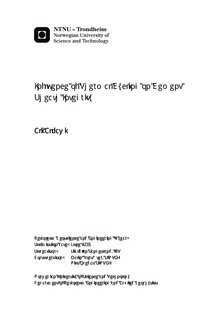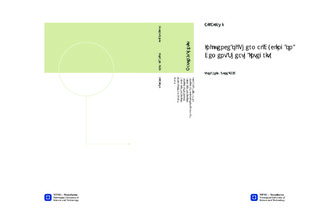| dc.description.abstract | The number of well integrity issues increase in the petroleum industry as wells are exposed to severe downhole conditions and have longer lifetimes. Techniques for enhanced oil recovery, like steam injection and field development in the Arctic, expose downhole materials to harsh cyclic temperature variations. This is also the scenario for normal production situations, although not to the same extent. Production can be stopped for various technical or non-technical reasons, or for injection purposes, all of which influence the temperature in a well. Heating and cooling make the steel casing expand and contract as a result of thermal expansion. This volumetric change can influence downhole well barriers, e.g. annular cement sheaths leading them to fail. Failure of annular cement sheaths can introduce well integrity issues and subsequent well leakages of downhole formation fluids. An experimental set-up was build during the present work to investigate the effect of thermal cycling on annular cement sheath integrity. The set-up included all the three materials in a well, casing, cement and rock allowing the whole system to be tested in one assembly at the laboratory scale. The testing specimens are composed of steel pipe cemented in place in a confining rock, thereby representing a downscaled wellbore. Temperature variations were applied radially to the casing and the effect of these variations on cement sheath integrity were observed. In-situ well integrity was continuously monitored by means of Acoustic Emission Testing (AET), and post failure analysis was conducted by Computed Tomography (CT) investigations. Three specimens were tested during the present work: The first sample was not exposed to any thermal cycles ("virgin" sample), and was directly sent to CT investigation after cement curing. The second sample was cemented with a centralized casing and the third was cemented with casing 50% off position. Both of the latter samples were exposed to the same thermal cycle profile.The experimental results from the continuous in-situ AET measurements revealed that casing centralization is important for wellbore integrity and that thinner annular cement sheaths withstand less temperature variations. CT examination and 3D visualization confirmed severe debonding at the casing-cement interface, for all the three specimens, including the uncycled "virgin" specimen. This indicates that the casing-cement bond is generally weak. For the cement-formation interface, the debonding was particularly clear for the two thermally cycled specimens. Furthermore, the 3D visualization results based on CT-scans displayed that, debonding is more prominent than radial cracking. Calculations of interfacial porosity, defined as the volume of interface pores/cracks as a fraction of the total sample volume, revealed that thermal cycling and casing centralization affects the magnitude of debonding and cracking of cement. The "50% casing stand-off" sample showed most interfacial porosity (1.38%), followed by "centralized casing" sample (1.18%) and finally, uncycled "virgin" sample showed, least interfacial porosity (0.59%). This displays that thermal cycling does indeed affect the sealing ability of annular cement sheaths in a negative way.Future work is essential in order to fully understand within which temperature ranges a particular well can be operated, without leaks along the annular cement sheaths. This can be obtained by conducting tests varying the different materials. Experiments with different cement systems, various formations and casing surface finishes can be executed. In addition, experimental tests determining the effect of exposing the formation to drilling fluids prior to cementing and further thermal cycling can be conducted. Effect of various wellbore scaling ratios is also important, as the effect of the material curvatures and total volumes on the obtained results are unknown. | nb_NO |

